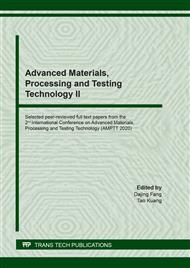p.32
p.40
p.46
p.53
p.59
p.65
p.73
p.80
p.87
Influence of Riser Necking Ratio and Taper on the Solidification of Heavy Ingots by Numerical Simulation
Abstract:
The effect of riser necking ratio and taper on solidification process of 96T steel ingot have been studied numerically using the software package ProCAST. The results show that the solidification time decrease with the increase of riser necking ratio, and the position of shrinkage porosity moves up and the secondary porosity presents a tendency of increase, and the inclusions on the shoulder of body ingot decreases. The riser taper has little effect on the solidification process of heavy ingots.
Info:
Periodical:
Pages:
59-64
Citation:
Online since:
January 2021
Authors:
Price:
Сopyright:
© 2021 Trans Tech Publications Ltd. All Rights Reserved
Share:
Citation:


